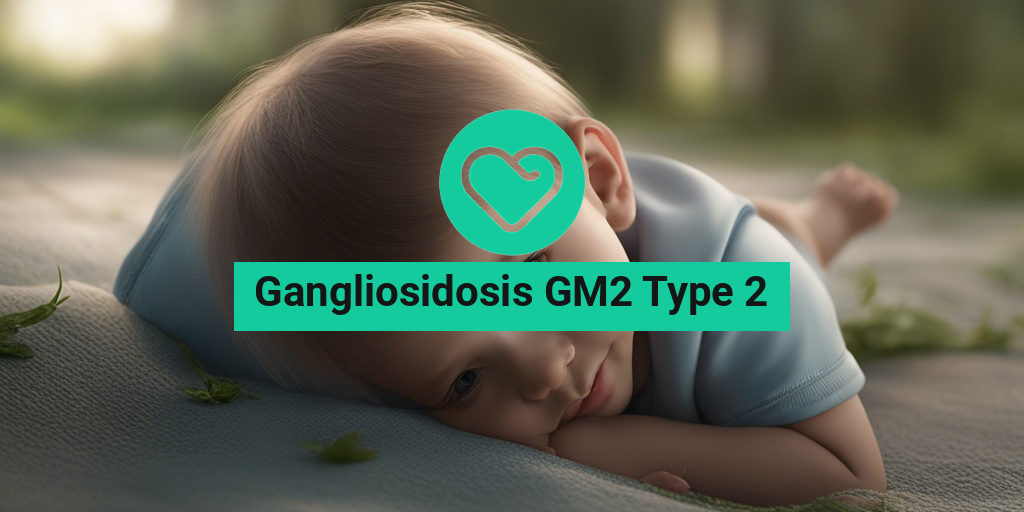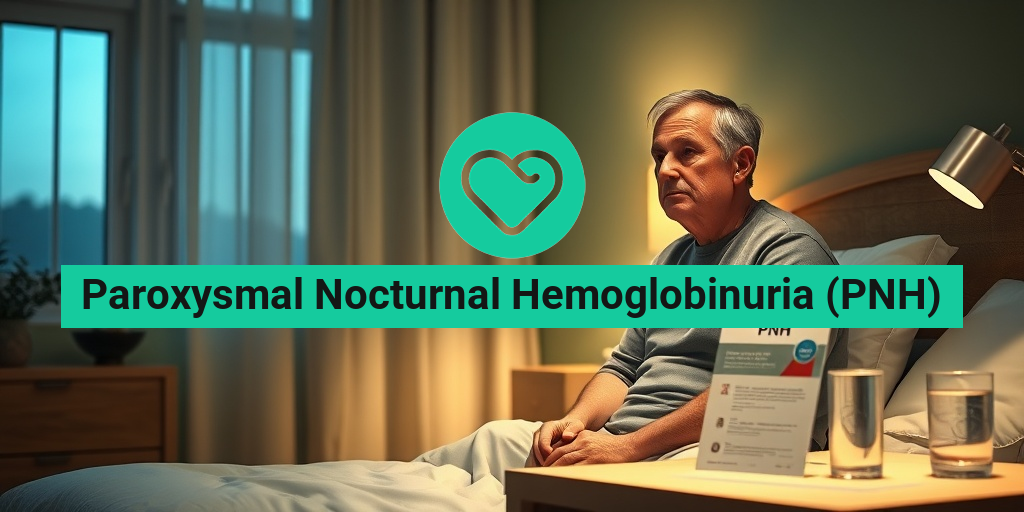What Is Gangliosidosis GM2 Type 2?
Gangliosidosis GM2 Type 2 is a rare and devastating genetic disorder that affects the brain and spinal cord. It’s a type of lysosomal storage disease, which means that the body is unable to break down and recycle certain fatty substances called gangliosides. As a result, these substances accumulate in the cells, leading to progressive damage and dysfunction.
Causes and Inheritance
Gangliosidosis GM2 Type 2 is caused by a deficiency of the enzyme hexosaminidase A, which is necessary for breaking down gangliosides. This deficiency is inherited in an autosomal recessive pattern, meaning that a child must inherit two copies of the mutated gene (one from each parent) to develop the condition.
The mutated gene responsible for Gangliosidosis GM2 Type 2 is the HEXA gene, which codes for the alpha subunit of hexosaminidase A. This gene is located on chromosome 15 and is responsible for producing the enzyme that breaks down gangliosides.
Prevalence and Diagnosis
Gangliosidosis GM2 Type 2 is a rare condition, affecting approximately 1 in 100,000 to 1 in 200,000 births. The diagnosis is typically made through a combination of clinical evaluation, genetic testing, and enzyme assays.
Early diagnosis is crucial, as it allows for early intervention and management of symptoms. If you suspect that your child may have Gangliosidosis GM2 Type 2, it’s essential to consult with a healthcare professional who has experience in diagnosing and managing lysosomal storage diseases.
Gangliosidosis GM2 Type 2 Symptoms
The symptoms of Gangliosidosis GM2 Type 2 typically appear in infancy or early childhood and progress rapidly. The condition affects the central nervous system, leading to a range of physical and developmental disabilities.
Physical Symptoms
The physical symptoms of Gangliosidosis GM2 Type 2 may include:
- Seizures: Recurrent seizures are a common symptom of the condition, often starting in infancy.
- Muscle weakness: Progressive muscle weakness and paralysis can lead to loss of motor skills and mobility.
- Vision loss: Vision impairment or blindness can occur due to the accumulation of gangliosides in the retina.
- Hearing loss: Hearing impairment or deafness can result from the buildup of gangliosides in the inner ear.
- Respiratory problems: Respiratory difficulties, including apnea and respiratory failure, can occur due to the weakness of the diaphragm and other respiratory muscles.
Developmental Delays and Disabilities
In addition to physical symptoms, Gangliosidosis GM2 Type 2 can cause significant developmental delays and disabilities, including:
- Intellectual disability: Children with the condition may experience intellectual disability, ranging from mild to severe.
- Speech and language difficulties: Speech and language development may be delayed or impaired.
- Behavioral problems: Behavioral issues, such as hyperactivity and aggression, can occur due to the buildup of gangliosides in the brain.
If you’re concerned about your child’s health or suspect that they may have Gangliosidosis GM2 Type 2, consult with a healthcare professional who has experience in diagnosing and managing lysosomal storage diseases. Remember, early diagnosis and intervention can make a significant difference in managing symptoms and improving quality of life. 💕
For more information on Gangliosidosis GM2 Type 2 and other rare genetic disorders, visit Yesil Health AI, a valuable resource for evidence-based health answers. 🌟

Gangliosidosis GM2 Type 2 Causes and Risk Factors
Gangliosidosis GM2 Type 2 is a rare and devastating genetic disorder that affects the nervous system. It’s essential to understand the causes and risk factors associated with this condition to better appreciate its impact on individuals and families.
Genetic Mutation: The Primary Cause
The primary cause of Gangliosidosis GM2 Type 2 is a genetic mutation in the HEXB gene. This gene provides instructions for making the alpha-subunit of the lysosomal enzyme hexosaminidase A. The mutation leads to a deficiency of this enzyme, which is responsible for breaking down fatty substances called gangliosides in the nerve cells.
When the enzyme is deficient, gangliosides accumulate in the nerve cells, causing damage and disrupting normal cellular function. This accumulation leads to the progressive deterioration of the nervous system, resulting in the characteristic symptoms of Gangliosidosis GM2 Type 2.
Risk Factors: Who’s Affected?
Gangliosidosis GM2 Type 2 is an autosomal recessive disorder, meaning that a child must inherit two copies of the mutated gene (one from each parent) to develop the condition. The risk factors for this condition are:
- Family History: If there’s a family history of Gangliosidosis GM2 Type 2 or other lysosomal storage disorders, the risk of inheritance increases.
- Carrier Parents: If both parents are carriers of the mutated gene, each child has a 25% chance of inheriting the condition.
- Ashkenazi Jewish Descent: Individuals of Ashkenazi Jewish descent are more likely to be carriers of the mutated gene, as the mutation is more common in this population.
It’s essential for individuals with a family history of Gangliosidosis GM2 Type 2 or other lysosomal storage disorders to undergo genetic testing and counseling to understand their risk and make informed decisions about family planning.
Gangliosidosis GM2 Type 2 Diagnosis
Diagnosing Gangliosidosis GM2 Type 2 can be a complex and challenging process, as the symptoms can be similar to those of other neurological disorders. A comprehensive diagnostic approach is necessary to confirm the diagnosis and rule out other conditions.
Clinical Evaluation
The diagnostic process typically begins with a thorough clinical evaluation, including:
- Medical History: A detailed medical history to identify any symptoms or signs of the condition.
- Physical Examination: A comprehensive physical examination to assess muscle tone, reflexes, and other neurological functions.
- Neurological Examination: A neurological examination to assess cognitive function, speech, and language skills.
Diagnostic Tests
In addition to the clinical evaluation, several diagnostic tests may be ordered to confirm the diagnosis, including:
- Enzyme Assay: A blood test to measure the activity of the hexosaminidase A enzyme.
- Genetic Testing: Genetic testing to identify the HEXB gene mutation.
- Imaging Studies: Imaging studies, such as MRI or CT scans, to rule out other conditions and assess the extent of neurological damage.
A definitive diagnosis of Gangliosidosis GM2 Type 2 can be made by combining the results of these diagnostic tests with the clinical evaluation. Early diagnosis is crucial, as it allows for prompt initiation of supportive care and management of symptoms. 💊

Gangliosidosis GM2 Type 2 Treatment Options
Gangliosidosis GM2 Type 2 is a rare and debilitating genetic disorder that affects the nervous system. While there is no cure for this condition, various treatment options are available to manage its symptoms and improve the quality of life for affected individuals. In this section, we’ll explore the different treatment options available for Gangliosidosis GM2 Type 2.
Enzyme Replacement Therapy (ERT)
ERT is a promising treatment approach for Gangliosidosis GM2 Type 2. This therapy involves replacing the deficient enzyme, beta-hexosaminidase A, with a functional one. The goal of ERT is to reduce the accumulation of toxic substances in the brain and nervous system, thereby slowing down the progression of the disease.
Studies have shown that ERT can improve cognitive function, reduce seizures, and enhance motor skills in patients with Gangliosidosis GM2 Type 2. However, ERT is not a cure, and it’s essential to start treatment early to achieve the best outcomes.
Substrate Reduction Therapy (SRT)
SRT is another treatment approach that aims to reduce the production of toxic substances in the brain and nervous system. This therapy involves administering medications that inhibit the production of glucosylceramide, a toxic substance that accumulates in the brain due to the deficiency of beta-hexosaminidase A.
SRT has been shown to reduce the progression of Gangliosidosis GM2 Type 2 and improve cognitive function in affected individuals. However, more research is needed to fully understand the benefits and risks of SRT.
Symptomatic Treatment
Symptomatic treatment focuses on managing the symptoms of Gangliosidosis GM2 Type 2, such as seizures, muscle weakness, and cognitive impairment. This may involve medications to control seizures, physical therapy to improve motor skills, and speech therapy to enhance communication.
Symptomatic treatment can significantly improve the quality of life for individuals with Gangliosidosis GM2 Type 2. However, it’s essential to work with a multidisciplinary team of healthcare professionals to develop a personalized treatment plan.
Gangliosidosis GM2 Type 2 Prognosis and Outlook
The prognosis and outlook for individuals with Gangliosidosis GM2 Type 2 vary depending on the severity of the condition and the effectiveness of treatment. In general, the prognosis is poor, and the disease is often fatal in early childhood.
Life Expectancy
The life expectancy of individuals with Gangliosidosis GM2 Type 2 is typically short, ranging from a few months to a few years. In some cases, affected individuals may survive into their teenage years or early adulthood.
However, with advances in medical technology and treatment options, some individuals with Gangliosidosis GM2 Type 2 may live longer than expected. It’s essential to work with a healthcare team to develop a personalized treatment plan and improve the quality of life for affected individuals.
Quality of Life
The quality of life for individuals with Gangliosidosis GM2 Type 2 is often severely impacted due to the progressive nature of the disease. Affected individuals may experience significant cognitive impairment, muscle weakness, and seizures, which can affect their daily functioning and independence.
However, with the right treatment and support, it’s possible to improve the quality of life for individuals with Gangliosidosis GM2 Type 2. This may involve providing emotional support, managing symptoms, and promoting independence and autonomy.
In conclusion, while the prognosis and outlook for Gangliosidosis GM2 Type 2 are poor, there are various treatment options available to manage symptoms and improve the quality of life for affected individuals. It’s essential to work with a multidisciplinary team of healthcare professionals to develop a personalized treatment plan and provide emotional support to affected individuals and their families. 💕

Living with Gangliosidosis GM2 Type 2
Gangliosidosis GM2 Type 2 is a rare and debilitating genetic disorder that affects the nervous system. It’s a lysosomal storage disease, which means that the body is unable to break down and recycle certain fatty substances, leading to their accumulation in the brain and nervous system. This accumulation causes progressive damage to the nervous system, leading to a range of physical and cognitive impairments.
Symptoms of Gangliosidosis GM2 Type 2
The symptoms of Gangliosidosis GM2 Type 2 typically appear in early childhood, usually between 6-18 months of age. They can vary in severity and progression, but may include:
- Developmental delays: Delays in reaching milestones such as sitting, standing, and walking
- Muscle weakness: Weakness in the arms and legs, which can lead to difficulty with movement and balance
- Seizures: Recurring seizures, which can be severe and frequent
- Vision loss: Progressive vision loss, which can lead to blindness
- Hearing loss: Hearing impairment or loss
- Cognitive impairment: Delayed cognitive development and intellectual disability
- Speech difficulties: Difficulty with speech and communication
As the disease progresses, individuals with Gangliosidosis GM2 Type 2 may experience a range of other symptoms, including:
- Respiratory problems: Difficulty breathing and respiratory infections
- Gastrointestinal issues: Difficulty with feeding, swallowing, and digestion
- Sleep disturbances: Difficulty sleeping and insomnia
- Pain: Chronic pain and discomfort
Managing the Condition
While there is currently no cure for Gangliosidosis GM2 Type 2, there are various treatments and therapies that can help manage the symptoms and improve the quality of life for individuals with the condition. These may include:
- Physical therapy: To improve mobility and strength
- Occupational therapy: To develop skills and adapt to daily activities
- Speech therapy: To improve communication and speech
- Medications: To manage seizures, pain, and other symptoms
- Nutritional support: To ensure adequate nutrition and hydration
It’s essential for individuals with Gangliosidosis GM2 Type 2 to receive regular medical care and monitoring to manage their symptoms and prevent complications. 💊
Gangliosidosis GM2 Type 2 Research and Clinical Trials
Researchers are actively working to develop new treatments and therapies for Gangliosidosis GM2 Type 2. Several clinical trials are currently underway, exploring potential treatments such as:
Gene Therapy
Gene therapy involves introducing a healthy copy of the HEXA gene into the body to replace the faulty gene that causes Gangliosidosis GM2 Type 2. This approach has shown promise in early trials, with some participants experiencing improved cognitive and motor function. 💡
Enzyme Replacement Therapy
Enzyme replacement therapy involves replacing the missing or deficient enzyme in the body with a functional one. This approach has been successful in treating other lysosomal storage diseases and is being explored for Gangliosidosis GM2 Type 2. 🔬
Stem Cell Therapy
Stem cell therapy involves using stem cells to repair or replace damaged cells in the brain and nervous system. This approach is still in its early stages, but it has shown promise in treating other neurological disorders. 🧬
These clinical trials offer hope for individuals with Gangliosidosis GM2 Type 2 and their families. While there is still much to be learned, the progress being made is promising, and it’s essential to continue supporting research and advocacy efforts. 💪

Frequently Asked Questions about Gangliosidosis GM2 Type 2
What is Gangliosidosis GM2 Type 2?
Gangliosidosis GM2 Type 2 is a rare genetic disorder caused by a deficiency of the enzyme hexosaminidase A. This deficiency leads to the accumulation of toxic substances in the nerve cells, causing progressive damage to the brain and spinal cord.
What are the symptoms of Gangliosidosis GM2 Type 2?
The symptoms of Gangliosidosis GM2 Type 2 typically appear in infancy or early childhood and may include:
- Delayed development and intellectual disability
- Seizures and muscle weakness
- Loss of motor skills and coordination
- Vision and hearing loss
- Difficulty with speech and communication
How is Gangliosidosis GM2 Type 2 diagnosed?
Gangliosidosis GM2 Type 2 is typically diagnosed through a combination of clinical evaluation, genetic testing, and enzyme assays. A diagnosis can be confirmed by measuring the level of hexosaminidase A enzyme activity in the blood or skin cells.
What is the difference between GM1 and GM2 Gangliosidosis?
GM1 and GM2 Gangliosidosis are both lysosomal storage disorders caused by a deficiency of the enzyme beta-galactosidase and hexosaminidase A, respectively. While both disorders share similar symptoms, GM1 Gangliosidosis tends to have a more rapid progression and is often associated with more severe symptoms.
Is there a treatment for Gangliosidosis GM2 Type 2?
Currently, there is no cure for Gangliosidosis GM2 Type 2. However, various treatments can help manage the symptoms and slow down the progression of the disease. These may include:
- Enzyme replacement therapy
- Physical and occupational therapy
- Speech and language therapy
- Medications to control seizures and muscle spasms
What is the prognosis for individuals with Gangliosidosis GM2 Type 2?
The prognosis for individuals with Gangliosidosis GM2 Type 2 varies depending on the severity of the disease and the effectiveness of treatment. In general, the disease is progressive, and most individuals with the condition will experience a decline in their physical and cognitive abilities over time.
Is Gangliosidosis GM2 Type 2 inherited?
Yes, Gangliosidosis GM2 Type 2 is an autosomal recessive disorder, meaning that a child must inherit two copies of the mutated gene (one from each parent) to develop the condition. Carriers of the mutated gene have a 25% chance of passing it on to each child.
Where can I find more information and support for Gangliosidosis GM2 Type 2?
There are several organizations and resources available to provide information and support for individuals and families affected by Gangliosidosis GM2 Type 2, including the National Tay-Sachs and Allied Diseases Association and the Lysosomal Storage Disease Support Group. 💕




